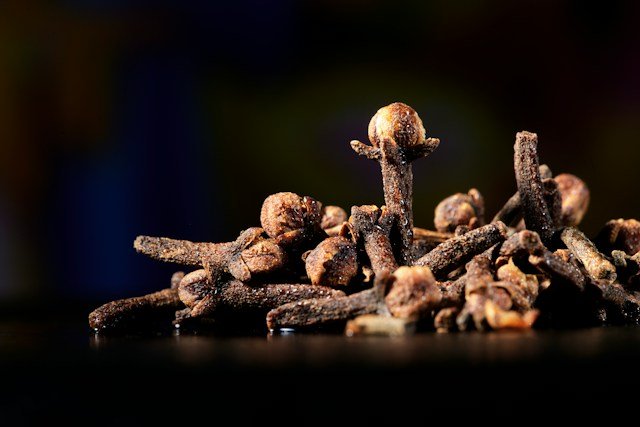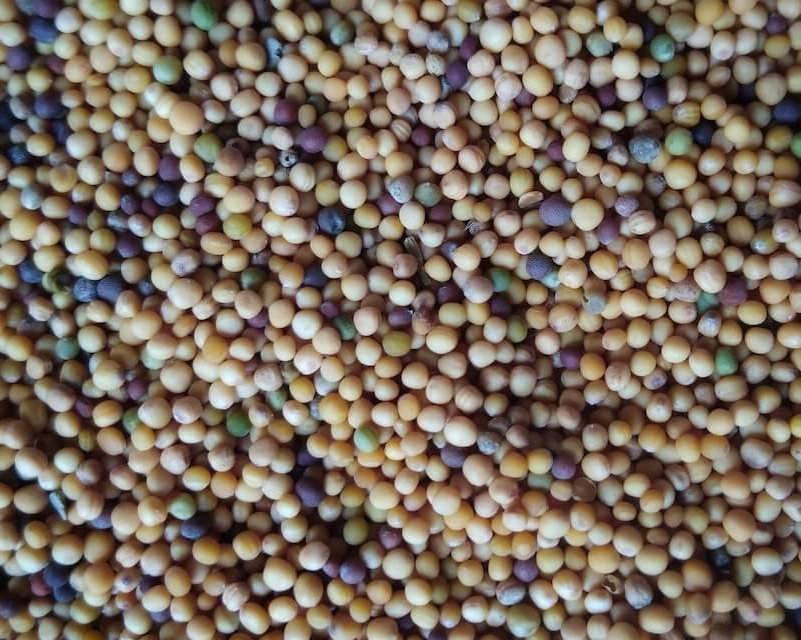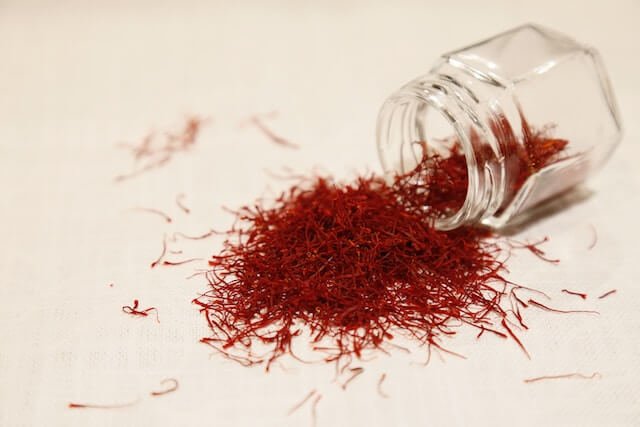Table of Contents
ToggleSpices From Around The World
Exploring new flavors on a culinary journey around the world is one of life’s great pleasures. As personal chefs, it is our responsibility to bring the world to our clients’ tables – to transport them across oceans with a tastebud-tingling mélange of spices woven together in a harmonious balance.
Beyond adding zest to each dish, spices can convey cultural heritage and spark memories of places the palate has never been.
In this post, we will journey to tropical rainforests, sun-soaked Mediterranean hillsides and across ancient trade routes to discover coveted spices that even kings of old could not obtain. By mastering these aromatic treasures from near and far, your culinary creations will delight and astound.
So let us embark on our expedition to unleash the magic of spices for your discerning clients!
Allspice:
A dried berry that tastes like a blend of cinnamon, nutmeg, and cloves. It’s often used in Caribbean and Middle Eastern cuisines. Fresh berries are bright and aromatic, while dried ones have a deeper, more complex flavor. Store in a cool, dry place.

Star Anise:
This star-shaped spice has a sweet, licorice-like taste. It’s commonly used in Chinese cooking and in making the Vietnamese soup, Pho. Fresh star anise is plump and shiny, while dried versions are a bit shriveled and duller in color. Keep in an airtight container, away from light.
Asafoetida:
A pungent spice used in Indian cuisine. It’s strong and bitter but mellows out when cooked. It’s typically sold in powdered form and should be stored in an airtight container to prevent its odor from permeating other foods.
Cardamom:
With a sweet, spicy flavor, cardamom is used in both savory and sweet dishes. Fresh pods are green and full, while dried ones are lighter and split open. Store in a cool, dark place.
Cinnamon:
Known for its sweet, woody flavor, cinnamon is used in a variety of cuisines. Fresh cinnamon sticks are tightly rolled and have a strong aroma, while older ones may be looser and less fragrant. Store in a cool, dry place.

Cloves:
These are dried flower buds with a warm, sweet, and slightly bitter flavor. They’re used in both sweet and savory dishes. Fresh cloves are dark brown and firm, while older ones may be lighter and brittle. Store in an airtight container.
Coriander:
The seeds of the cilantro plant, coriander has a warm, citrusy flavor. Fresh seeds are bright and aromatic, while dried ones are darker and have a more muted flavor. Store in an airtight container.
Cumin:
This spice has a warm, earthy flavor and is used in a variety of cuisines, from Mexican to Middle Eastern. Fresh cumin seeds are uniformly brown and aromatic, while older ones may be lighter and less fragrant. Store in a cool, dark place.
Fennel Seeds:
These have a sweet, licorice-like flavor and are often used in Italian cooking. Fresh seeds are bright green, while dried ones are duller in color. Store in a cool, dry place.
Fenugreek:
With a bitter, burnt sugar taste, fenugreek is commonly used in Indian cuisine. Fresh seeds are yellowish-brown and have a strong aroma, while dried ones are harder and less fragrant. Store in an airtight container.

Mustard Seeds:
These spicy seeds are used in a variety of dishes, from pickles to curries. Fresh mustard seeds are uniformly colored and have a strong aroma, while older ones may be faded and less fragrant. Store in a cool, dry place.
Nutmeg:
A warm, sweet spice used in both sweet and savory dishes. Fresh nutmeg is firm and aromatic, while older ones may be shriveled and less fragrant. Store in a cool, dark place.
Paprika:
Made from ground peppers, paprika can range from sweet to hot. Fresh paprika is vibrant red and has a strong aroma, while older ones may be duller in color and less fragrant. Store in a cool, dark place.
Turmeric:
Known for its bright yellow color, turmeric has a warm, earthy flavor. Fresh turmeric is plump and shiny, while dried turmeric is duller in color and has a more muted flavor. Store in a cool, dry place.

Saffron:
The most expensive spice in the world, saffron has a sweet, floral flavor. Fresh saffron threads are bright red and highly aromatic, while older ones may be faded and less fragrant. Store in an airtight container, away from light.
Sumac:
This Middle Eastern spice has a tart, lemony flavor. Fresh sumac is vibrant red and highly aromatic, while older ones may be faded and less fragrant. Store in a cool, dark place.
Caraway Seeds:
Used in European and Middle Eastern cuisines, caraway seeds have a warm, slightly sweet flavor. Fresh seeds are uniformly colored and aromatic, while older ones may be faded and less fragrant. Store in a cool, dry place.
Chervil:
A delicate herb with a mild anise flavor, chervil is used in French cooking. Fresh chervil is vibrant green and highly aromatic, while dried chervil is duller in color and has a more muted flavor. Store in a cool, dry place.
Grains of Paradise:
These West African seeds have a warm, peppery flavor with hints of citrus. Fresh seeds are uniformly colored and aromatic, while older ones may be faded and less fragrant. Store in a cool, dry place.
Juniper Berries:
Known for their use in gin, juniper berries have a sharp, piney flavor. Fresh berries are plump and shiny, while dried ones are shriveled and duller in color. Store in an airtight container, away from light.
Mace:
A relative of nutmeg, mace has a warm, spicy flavor. Fresh mace is bright red and highly aromatic, while older ones may be faded and less fragrant. Store in a cool, dry place.
Mahlab:
Made from the pits of sour cherries, mahlab has a sweet, nutty flavor. It’s often used in Middle Eastern baking. Fresh mahlab is uniformly colored and aromatic, while older ones may be faded and less fragrant. Store in an airtight container.
Nigella Seeds:
These tiny black seeds have a slightly bitter, onion-like flavor. They’re often used in Indian and Middle Eastern cuisines. Fresh seeds are uniformly colored and aromatic, while older ones may be faded and less fragrant. Store in a cool, dry place.
Pimenton:
A type of smoked paprika from Spain, pimenton has a sweet, smoky flavor. Fresh pimenton is vibrant red and has a strong aroma, while older ones may be duller in color and less fragrant. Store in a cool, dark place.
Sichuan Peppercorns:
Not true peppercorns, these have a unique citrusy flavor and a numbing effect. They’re used in Chinese cooking. Fresh peppercorns are bright red and highly aromatic, while older ones may be faded and less fragrant. Store in a cool, dry place.
Tamarind:
This sour fruit is used in a variety of cuisines, from Indian to Mexican. Fresh tamarind is plump and shiny, while dried tamarind is shriveled and duller in color. Store in a cool, dry place.
Wasabi:
Known for its heat, wasabi is commonly used in Japanese cuisine. Fresh wasabi is vibrant green and highly aromatic, while dried wasabi is duller in color and has a more muted flavor. Store in a cool, dry place.
Za’atar:
A Middle Eastern blend of herbs and spices, za’atar has a tangy, slightly salty flavor. Fresh za’atar is vibrant green and highly aromatic, while older ones may be faded and less fragrant. Store in a cool, dry place.
Ajowan:
These seeds have a strong thyme-like flavor and are used in Indian cooking. Fresh ajowan seeds are uniformly colored and aromatic, while older ones may be faded and less fragrant. Store in a cool, dry place.
Amchur:
Made from dried green mangoes, amchur has a tart, slightly sweet flavor. It’s often used in Indian cuisine. Fresh amchur is uniformly colored and aromatic, while older ones may be faded and less fragrant. Store in a cool, dry place.
Anardana:
These dried pomegranate seeds have a sweet, tart flavor. They’re often used in Indian and Middle Eastern cuisines. Fresh anardana is uniformly colored and aromatic, while older ones may be faded and less fragrant. Store in a cool, dry place.
Annatto:
Used for its bright red color, annatto has a mild, slightly peppery flavor. It’s often used in Latin American and Caribbean cooking. Fresh annatto is vibrant red and highly aromatic, while older ones may be faded and less fragrant. Store in a cool, dry place.
Cassia:
A relative of cinnamon, cassia has a stronger, more bitter flavor. It’s often used in Chinese cooking. Fresh cassia is tightly rolled and has a strong aroma, while older ones may be looser and less fragrant. Store in a cool, dry place.
Epazote:
This Mexican herb has a strong, slightly bitter flavor. Fresh epazote is vibrant green and highly aromatic, while dried epazote is duller in color and has a more muted flavor. Store in a cool, dry place.
Galangal:
A relative of ginger, galangal has a sharper, more citrusy flavor. It’s used in Southeast Asian cooking. Fresh galangal is plump and shiny, while dried galangal
Galangal:
A relative of ginger, galangal has a sharper, more citrusy flavor. It’s used in Southeast Asian cooking. Fresh galangal is plump and shiny, while dried galangal is duller in color and has a more muted flavor. Store in a cool, dry place.
Kaffir Lime Leaves:
Used in Thai cooking, these leaves have a strong, citrusy flavor. Fresh leaves are vibrant green and highly aromatic, while dried leaves are duller in color and have a more muted flavor. Store in a cool, dry place.
Kalonji:
Also known as black cumin, kalonji has a slightly bitter, onion-like flavor. It’s often used in Indian cuisine. Fresh kalonji seeds are uniformly colored and aromatic, while older ones may be faded and less fragrant. Store in a cool, dry place.
Lovage:
This herb has a strong celery-like flavor and is used in European cooking. Fresh lovage is vibrant green and highly aromatic, while dried lovage is duller in color and has a more muted flavor. Store in a cool, dry place.
Makrut Lime Powder:
Made from ground makrut lime leaves, this spice has a strong, citrusy flavor. It’s often used in Thai cuisine. Fresh powder is bright green and highly aromatic, while older powder may be faded and less fragrant. Store in a cool, dry place.
Ras el Hanout:
A North African spice blend, ras el hanout has a warm, slightly sweet flavor. Fresh blends are brightly colored and highly aromatic, while older blends may be faded and less fragrant. Store in a cool, dry place.
Shiso:
This Japanese herb has a unique flavor that’s somewhat a cross between mint and basil. Fresh shiso is vibrant green (or purple, depending on the variety) and highly aromatic, while dried shiso is duller in color and has a more muted flavor. Store in a cool, dry place.
Silphium:
Also known as laserwort, this ancient spice was used by the Romans and has a strong, slightly bitter flavor. It’s typically sold in powdered form and should be stored in an airtight container to keep its flavor intact.
Tasmanian Pepper:
This Australian spice has a hot, slightly sweet flavor. Fresh peppercorns are uniformly colored and aromatic, while older ones may be faded and less fragrant. Store in a cool, dry place.
Tonka Beans:
These seeds have a sweet, vanilla-like flavor and are often used in desserts. Fresh tonka beans are uniformly colored and aromatic, while older ones may be faded and less fragrant. Store in a cool, dry place.
Wattleseed:
Used in Australian cuisine, wattleseed has a nutty, slightly coffee-like flavor. Fresh seeds are uniformly colored and aromatic, while older ones may be faded and less fragrant. Store in a cool, dry place.
Xawaash:
A Somali spice blend, xawaash has a warm, slightly sweet flavor. Fresh blends are brightly colored and highly aromatic, while older blends may be faded and less fragrant. Store in a cool, dry place.
Yuzu Kosho:
A Japanese condiment made from yuzu peel, chilies, and salt, yuzu kosho has a hot, citrusy flavor. Fresh yuzu kosho is vibrant in color and highly aromatic, while older ones may be faded and less fragrant. Store in a cool, dry place.
Zedoary:
A relative of turmeric, zedoary has a warm, slightly bitter flavor. It’s often used in Indian and Indonesian cuisines. Fresh zedoary is plump and shiny, while dried zedoary is duller in color and has a more muted flavor. Store in a cool, dry place.
Spices From Around The World
As we come to the end of this journey through the flavors of the world, it’s clear that spices hold a special place in our hearts and kitchens. From the lush rainforests of Southeast Asia to the sun-soaked hillsides of the Mediterranean, we have explored how spices have traveled through ancient trade routes and marvel at their ability to add depth and complexity to any dish.
We have discovered that these coveted treasures were once only accessible to kings and nobles, but now, anyone can bring the magic of spices into their own kitchen. By mastering these aromatic gems, you will not only elevate your dishes to new levels but also delight and astound your clients with every bite.
The possibilities are endless; from exotic curries to homemade chai lattes, your culinary creations will transport your taste buds on a global adventure. So why limit yourselves to bland and ordinary flavors? Let’s embrace the diversity of spices and let them add that extra oomph to our meals.
As we come full circle, it’s time for you to put on your chef’s apron, grab your spice rack, and embark on your own expedition through these flavorful ingredients. Whether you’re a professional chef or a home cook looking to impress, there is nothing more satisfying than creating a dish that is bursting with unique and delicious flavors.
So don’t wait any longer; let’s unlock the magic of spices together! With each sprinkle and dash, you’ll discover a world of culinary possibilities waiting for you. Happy cooking!
Wondering what tools a personal chef might need? I’ve written an extensive article for you – A Comprehensive List Of Must-Have Tools and Essential Items for the Personal Chef
Wondering what tools a personal chef might need? I’ve written an extensive article for you – A Comprehensive List Of Must-Have Tools and Essential Items for the Personal Chef

